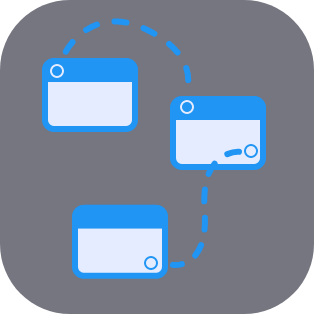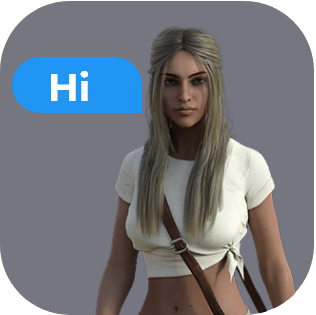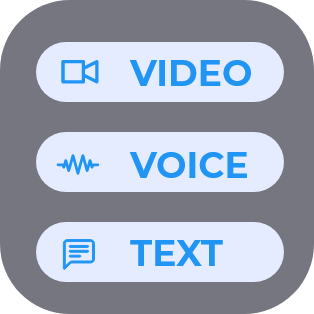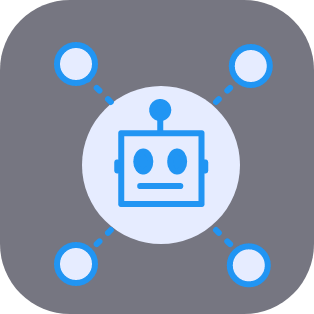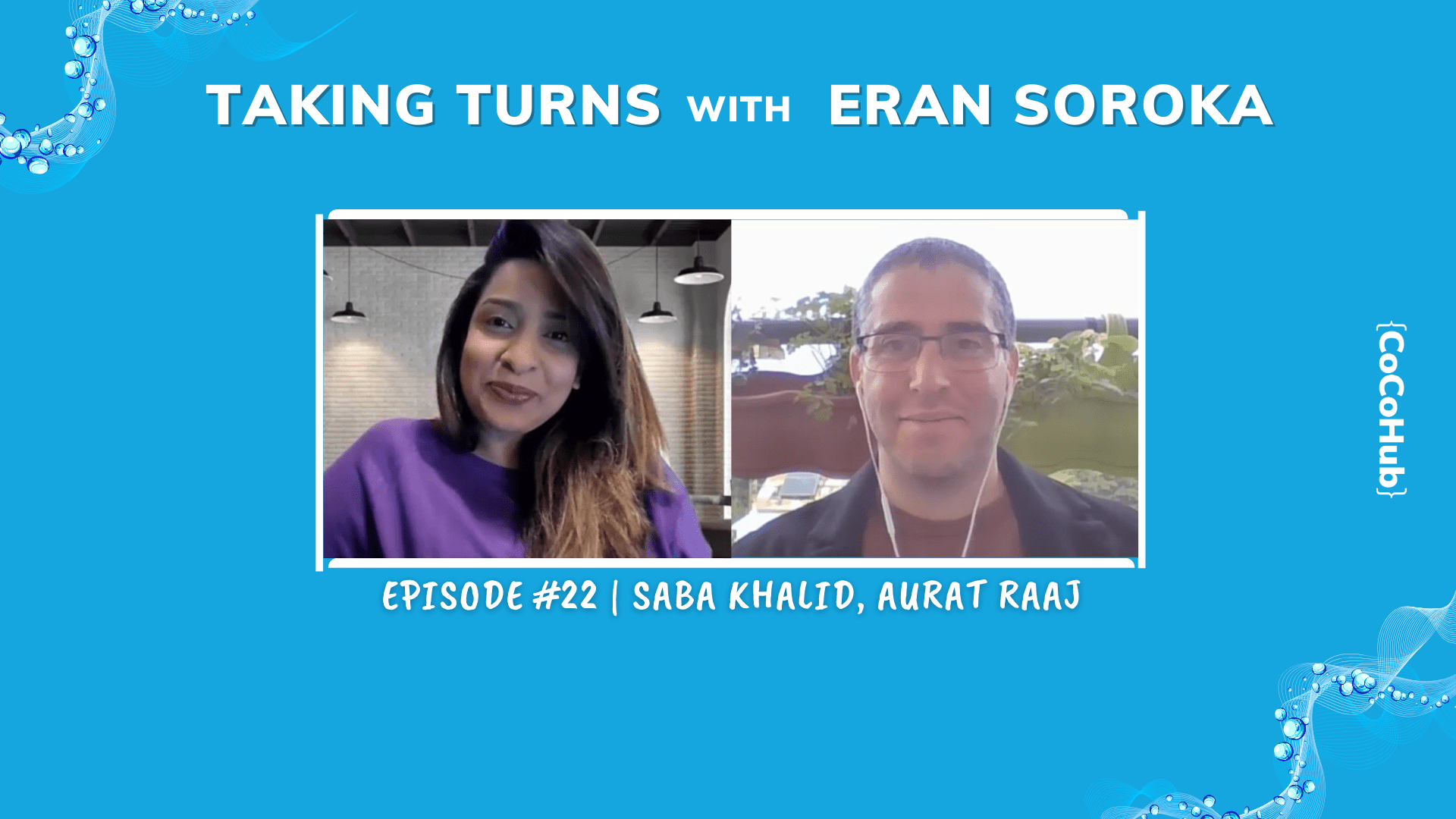Think about a tough job for a conversation designer; now, think about a tougher one; then, there’s Saba Khalid, the creator of Aurat Raaj – Raaji.
Girls and women in Pakistan are in far challenging situation than we can even imagine. In a recent survey called “female opportunity index”, conducted by a German bank, Pakistan was ranked 100th out of… 100 countries. So when Saba, a journalist, speaker, activist and entrepreneur, took upon her the task of creating a chatbot that will educate girls and young women about sensitive issues – from sexual education to menstruation, from religious tolerance to gender equality – she got a lot of backlash, as well as technological issues that prevented her and her team from reaching most of the audience.
All of this didn’t deter her, though. Since creating the aforementioned chatbot, Raaji or Aurat Raaj (Urdu for “Women rule”) – first as a cartoon, than a chatbot – she won the Vodafone Innovation for Women prize, UKAID ILM Ideas prize, MIT Solve, and is a Pollination Project seed and impact grantee. After seeing CoCoHub’s chatbots on Zoom workshop and meeting with us, she took Raaji to Zoom to get the message in a more friendly and visual way. That’s her story.
how did you come to conversation Design?
It’s been a long journey. I didn’t start off knowing that I was a conversational designer. I always just enjoyed reading conversations and seeing the importance of conversation. So if I can take it back a little while ago, I created a book for my own self, and for my friends, based out of a lot of conversations on WhatsApp that we were going through. Actually, it was telling stories about my own life, their lives. The country, the religion, the culture, the things that were happening. hey were all told through conversation. Although I never published that book, that got me really interested in conversation as a tool to change somebody’s opinion, provide support, be empathetic. So I wish I had published a book, but that really did give me the importance of conversation. It really pushed me to understand it. However, it was much later that I got into conversation design when we started building our chatbot tool, called Raaji. Then I became a conversational designer, because I wanted to provide conversations that were supportive, empathetic, informational – around a very, very taboo topic in Pakistan, which is women’s reproductive health. Specifically topics such as sex education, gender equality, menstruation, consent. So these topics and conversations were really important for us and that’s how I got into conversational design.What specifically brought you to build Raaji?
For me, before the conversations through AI or chatbots, we were building a cartoon. So the cartoon that we had created had conversations but they were told through stories and the same topics that I’m very, very passionate about. Then, they were embedded in those storylines and you’d go and show them in rural areas and urban areas. We would put up a projector and would show that cartoon. After every time that the cartoon would end, we would see that girls had so many questions. Because now for the very first time somebody had spoken about a topic that their parents, their friends, their classmates, the teachers – they were afraid to talk about. So it opened up this Pandora’s box of like, why does menstruation happen? How long does it last? Does it happen to boys? Why doesn’t it happen to boys?! So we had all these questions, and often, we didn’t have the time to have longer conversations and we would pack up all our equipment, our multimedia, and we would leave these classrooms after showing that cartoon.Bridging the gap
Then I thought, okay, how do we continue to have this conversation long term. We can’t just leave these girls and say – hey, now we told you the basics, and you go figure it out. So I think at that time I started speaking to a lot of my own mentors. I was part of an incubation program and I was seeing how chatbots were being deployed for marketing, for sharing information. You had a cinema bot, an e-commerce bot. However, something that’s so important such as education – that’s where the application wasn’t there. Also, something that’s important like women’s empowerment that’s where the application wasn’t there. So I saw a huge gap and I started seeing – could this be a way for us to provide that education long term, and it could be available 24/7, it could also be something that has no judgment because humans tend to judge when we’re providing information. So I saw this as a way – and then I tried to test Raaji in actual real market in classrooms. And I saw the way that girls responded to having that conversation come through a chatbot, Raaji. So, for me, that was a very interesting journey.
And then you saw our workshop of chatbots on Zoom, and you decided to take it to the next level.
Yes, so I was really struggling. The audience that I had set out for myself, during Covid, was the most discluded audience. There’s a huge gender digital divide. However, there’s also an overall divide in the country when it comes to internet access, internet penetration. Adolescent girls often are the last ones to get access to information technology, and I knew this when we were going into classrooms. Sometimes, talking to Raaji, girls were learning how to use the laptop for the very first time. So I knew that when the Covid pandemic happened, girls would be the last ones to be able to access quality information and continue learning about their health, their bodies and other aspects of education. So I knew that I had to engage community leaders. People who could access those girls, who could go door to door and talk to them. This for me was very important. So how do I get to the community leaders, to volunteers? To people who could find girls who actually need it? That’s when we decided to use Zoom as a tool to train volunteers. Get them excited and informed about this topic. However, for them, it was not that interesting because they obviously had more information already. So we thought – how do we get that information provided through Zoom with an interface, with an avatar, how interesting would that be for everyone, not just kids? Then we did a couple of experiments with you and we have a lot more experiments happening where there’s a full class. Also, we’re working with you about the possibility to get Raaji an avatar that’s more customized.Previously on Taking Turns | Watch the whole playlist
Why Eric Kades believes in human safety valves? Nick Thomson explains why it’s so easy to sell a chatbot today Amy Stapleton helps the lonely with storytelling chatbotsFinding male allies
And one of the most interesting things about the Zoom-based Raaji that we built with CoCoHub was that it was no longer relevant just to girls. There were so many topics that we were excited about. For instance, we did a conversation on male allies and how they can support menstruation. And this was actual information and knowledge that are a lot of men who already know about the basics of menstruation didn’t know. They didn’t know how to support partners, they didn’t know how to support their wives, girlfriends, daughters. So for us, we saw the Zoom thing for an opportunity to open up this conversation to a larger audience. And then having me and one of my colleagues do those conversations live with Raaji – that shows the potential of what we can do in the future with chatbots. Especially when they’re coming through different channels. So yeah, we’re really excited about that particular partnership.What was the biggest challenge in creating and using Raaji?
Because I come from a journalism background, writing conversations for Raaji is very easy. However, I often feel that I have to also have a bit of a technology background. It’s crucial to understand their application and what the limitations of chatbots are. First, after I started learning DialogFlow on my own, we built a very open-ended chatbot. And we thought – okay, this is a great way for us to collect conversations and questions. However, most of the times our chatbot would fail because it did not have enough data. So for me, this was really a difficult lesson to learn: you can’t have a chatbot solving every problem in reproductive health. Alternatively, you might need to focus and realize that you have to build these happy paths or have it more closed-ended, instead of having it so open-ended that it’s often giving the wrong answers. I wanted to make sure that it doesn’t give the wrong answer. For a lot of times when you’re building a chatbot, in the first few months – even if it’s giving me the wrong answer, it shows you the huge potential. For us, giving a wrong answer means that you’re providing the wrong health information. There was a responsibility that comes with being a conversational designer. Especially when it comes to a very, very vulnerable audience. You have to make sure that there is no room for error. At that moment, although the technology has developed rapidly, there is still a lot of limitations around learning. You can dream big, but the scope should be limited if you want it to work.CoCo Content Recocomendations
> 6 Use cases for Chatbots on Zoom: your new marketing strategy > How to build a chatbot in virtually any language? > Why do you need to give personality to your chatbot?What’s the most interesting or funny thing that happened to you as a conversation designer?
So, I really started enjoying being a conversational designer. Althgouth this might not be very relevant to Raaji – when I’m bored, when I need to just amuse myself, I make bots for my nephew. Because my nephew has this obsession with poop, most of the conversation is all about poop and it makes my nephews laugh so much. And he’s gotten so addicted to seeing how chatbots could be built. How quick they are to, you can build it together, and then how important the conversation is. Actually, I test my own conversation skills this way. If I’m able to make him laugh in, like, five minutes – I’ve done a great job. If I’m not able to make him laugh with a bot, then I fail as a conversation designer. So for me, we have to think about all the different ways that chatbot could be applied, just even for our own families. Actually I heard about a very interesting application within CoCoHub of somebody who had built a chatbot for someone who was very close to them who had passed away. Hence, this was for them a way to bring them back to life, or to just remind themselves about the connection that they had. So we have to see chatbots more than just something that software developers do for large companies. It has to be applied in various scenarios, and however it solves a problem, you should try and apply it.
Both you and I are coming from a background of journalism. If somebody wants to be a conversation designer like we are now, what tips or advice can you give this person?
The key skill that one must have is having a lot of empathy and being authentic in their conversation. So how you would speak to a 5-year old, how a 5-year old would speak back to you. How a girl in a certain situation would have been thinking about a certain topic? You have to put yourself in that situation, and only then can you write great conversation. So being authentic, and having a lot of empathy that’s the key to being a good conversation designer. Also, test a lot of different ways that people have done build chatbots. For instance – I see Jason’s conversations with chatbots that he’s built, and it’s hilarious and it gives me a lot of ideas of how I can also build my conversations. Even though the application is entirely different, the way that he puts them together are very inspirational for me.Next week, another episode of Coming To Terms with Miri is coming your way! Hungry for more? Join our newsletter | Follow us on YouTube | LinkedIn | Twitter | Facebook | Instagram | Or join our communities on Discord & Meetup

